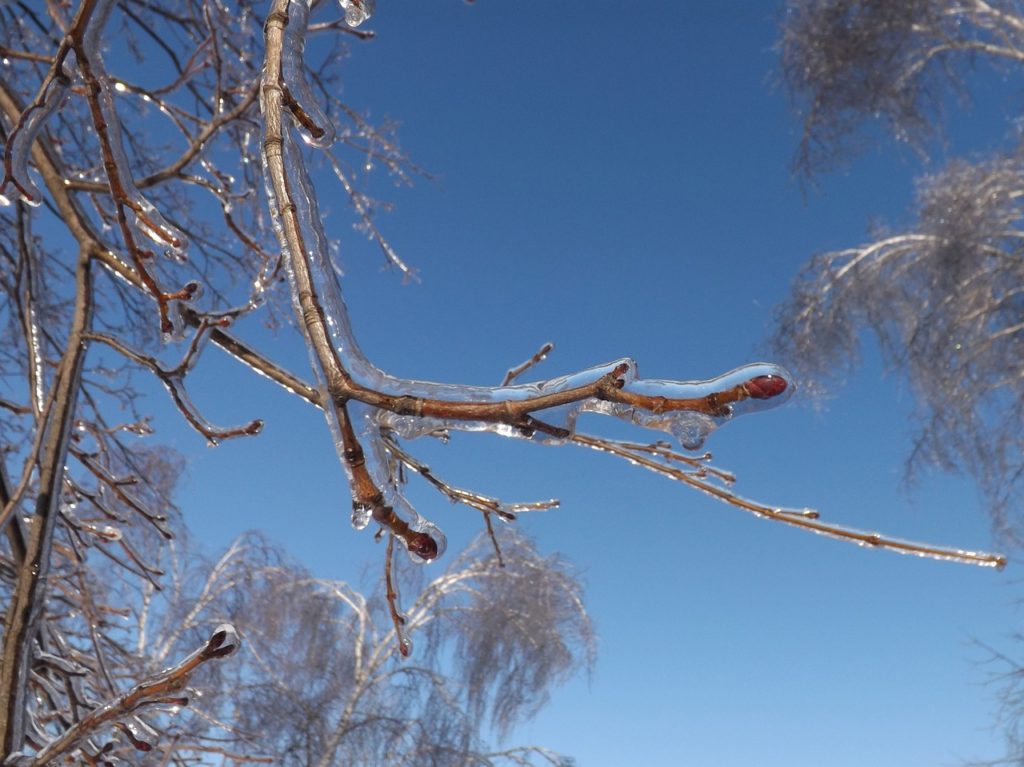Introduction
In certain geographic locations, temperatures may fluctuate in spring. When temperatures plummet below freezing, they can damage or kill exposed plants. Spring frosts affect a multitude of plants. They are especially detrimental to exotic plants that are not accustomed to growing in colder climates.
How Spring Frosts Impact Plants
When a plant has incurred frost damage, the effects generally become apparent within a few days. The extent of the damage is determined by whether or not the plant has broken dormancy. If leaf buds are still small, they will turn brown, assuming a scorched appearance. Leaves that have elongated will turn limp, darken in color, and appear water soaked. Some leaves may curl upwards. Affected leaves are often shed from the plant.
Flowering buds are more prone to frost damage than leaf buds. If flowering buds have begun to form, blooms may be eradicated from the plant for the growing season. This type of injury is common on flowering trees and shrubs, as well as fruit trees. On fruit trees, any flowers or fruit that are present will likely blacken and fall. Fruit trees will not produce fruit during the growing season if their flowers have been eliminated.
Many plants will produce a second flush of growth within one to two weeks. While this will restore the plant’s foliage, it will also drain the plant’s photosynthetic resources. This often results in a dearth of flowers and fruit. Spring frosts will not often kill affected plants. However, prolonged exposure to frigid temperatures can result in extensive foliar damage.
Prevention & Management
- When planting in spring, select trees or shrubs that can endure colder climates. Wait until the final projected frost to add any new plants to a landscape or garden. Planting after the final frost has occurred will significantly reduce the potential for frost damage to susceptible plants.
- Frost dates have been estimated for various regions, with information compiled by the Arnold Arboretum in Massachusetts, in conjunction with the United States Department of Agriculture. The data is not absolute, but may assist in predicting final frost dates. The relevant data can be found at the following link: http://planthardiness.ars.usda.gov/.
- Plants should be covered from late night to early morning, when frost may develop. Cover plants prior to forecasted frosts, and uncover them the following morning. Buckets, plant pots, and other containers can be used to shield plants. Turn the container upside down, and place it securely over the plant. Place a heavy object, such as a brick or rock, on top of the container to prevent it from tipping over, and exposing the plant.
- Newspaper, burlap, bed linens, and light sheets can be draped loosely over plants, and secured along the edges with heavy objects to protect them from spring frosts. Ensure that materials are removed each morning once the sun has risen. Allowing plants to remain concealed for an extended period can cause them to become stressed.
- Maintain plants through proper pruning. Avoid immediately pruning trees and shrubs that have incurred frost damage. Pruning may encourage new budding, which renders plants susceptible to additional cold damage. Avoid leaving stumps, or stubs extending from the trunk of a plant. If the majority of a plant’s branches are damaged, removal may be required.
- Trees with large, flexible branches, or wide, horizontal leaves may have their limbs tied upward together, or down against the trunk to reduce the potential for snow or ice loading. Binding leaves in a vertical position can help to prevent breakages.
- Applications of fertilizer may allow plants to recover from cold damage. Fruiting trees and shrubs benefit from multiple applications of fertilizer. Fertilization will encourage the production of flowers, and larger fruit. Avoid excessive fertilization of plants that are vulnerable to fungal or bacterial infections.


